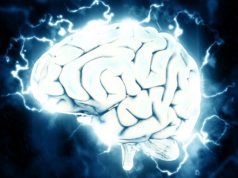Silent strokes, which have no immediate symptoms but could cause long-term cognitive and learning deficits, occur in a significant number of severely anaemic children, especially those with sickle cell disease, according to research presented at the American Stroke Association’s International Stroke Conference 2011.
One-quarter to one-third of children with sickle cell disease have evidence of silent strokes in their brains, according to Michael M Dowling, lead author of the study and assistant professor of Paediatrics and Neurology, University of Texas Southwestern Medical Center, Dallas, USA.
“These are five- to 10-year-old children who have brains that look like the brains of 80-year-olds,” Dowling said. “These strokes are called ‘silent’ because they do not cause you to be weak on one side or have any obvious neurologic symptoms. But they can lead to poor academic performance and severe cognitive impairments.”
Sickle cell disease is a blood disorder characterised by low levels of haemoglobin. About 10% of children with sickle cell disease suffer a stroke. Blood transfusions can reduce the high risk of repeat strokes.
Dowling and colleagues hypothesised that silent strokes occur during severe anaemia and may be detectable by MRI. They used MRI on the brains of 52 hospitalised children 2- to 19-years-old at Children’s Medical Center Dallas with haemoglobin concentrations dropping below 5.5g/dL. They compared severely anaemic children with sickle cell disease to a group of children without sickle cell disease who had haemoglobin levels below 5.5g/dL.
They identified silent strokes in about 20% of the children with sickle cell disease who were experiencing acute anaemia. They also saw evidence of silent strokes, though not as often, in severely anaemic children who did not have sickle cell disease.
The many reasons, besides sickle cell disease, why children could have anaemia include trauma, surgery, iron deficiency or cancer such as leukemia.
“These are brain injuries that go unnoticed by doctors, unless the children have testing with a special MRI,” he said. “We looked at every child who went to the hospital for a 30-month period and identified about 400 children that came in with haemoglobin below 5.5g/dL. That represented about 12% of the admissions for sickle cell disease and about 1% of the total admissions to Children’s Medical Center.”
The findings suggest that children with or without sickle cell disease who have acute anaemia could be suffering undetected brain damage. The researchers suggest that all children with severe anaemia need careful examination for silent strokes.
Improved recognition and timely transfusion to increase blood haemoglobin levels could prevent permanent brain damage in children with silent strokes, according to the study.
Future studies should look at larger groups of children for longer periods to better understand the impact of acute anemia on children, Dowling said.
The Children’s Clinical Research Advisory Committee of Children’s Medical Center Dallas funded the study.












